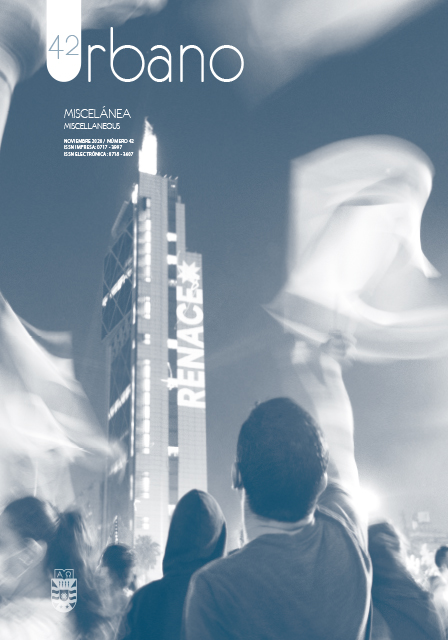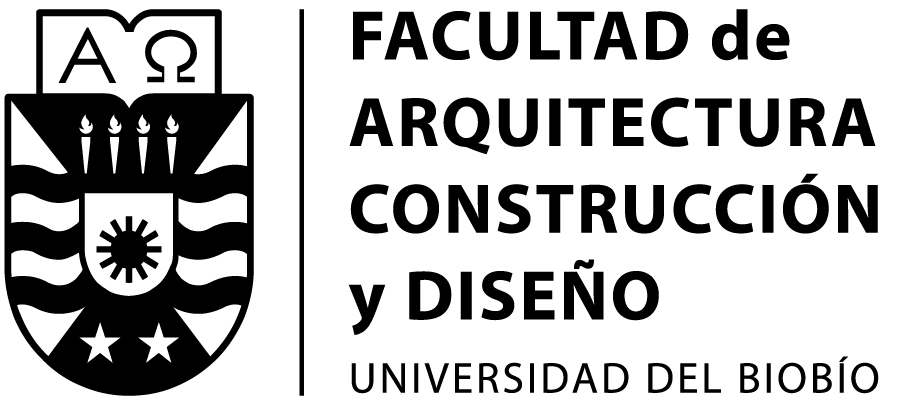Ciudad y segregación vapuleadas por el capitalismo. Crítica de los enfoques idealistas
DOI:
https://doi.org/10.22320/07183607.2020.23.42.01Palabras clave:
neoliberalismo, estructuralismo, idealismo, urbanismoResumen
Siempre ha sido difícil definir qué es una ciudad y ahora lo es más porque el auge de los negocios inmobiliarios la ha tenido sometida a una transformación incesante, incluyendo sus áreas periurbanas. Con ello, también la segregación ha adquirido un estado de mutación constante y, de hecho, ya no parece estabilizarse, como en el pasado, en patrones espaciales reconocibles. Esto ha estado sucediendo en las ciudades chilenas, como en las de muchos otros países. Resulta comprensible, así, la tentación de sustituir las definiciones físico-geográficas y planimétricas, tanto de ciudad como de la segregación, por otras que enfatizan los procesos. ¿Quiere decir, entonces, que la dimensión físico-espacial de la ciudad carece de importancia como, implícita o explícitamente, argumentan los economistas neoliberales y los urbanistas apegados a enfoques estructural-deterministas? Es cierto que la pandemia del COVID19 hace evidentes las flaquezas de estos enfoques que desconsideran lo espacial, pero eso no resta relevancia al examen de su armado teórico, el que se abordará aquí con base en una revisión crítica de la literatura especializada y en testimonios de especialistas recogidos por un estudio sobre segregación en tres ciudades chilenas, del cual este artículo es resultado. Concluiremos estas páginas planteando la necesidad de reforzar la investigación empírica de la ciudad y la segregación, lo mismo que nuestra atención a sus dimensiones subjetivas.
Descargas
Citas
Bachelard, G. (2000). La formación del espíritu científico; contribución a un psicoanálisis del conocimiento objetivo. México: FCE.
Braudel, F. (1986). La dinámica del capitalismo. Breviarios #427 del Fondo de Cultura Económica. México: FCE.
Brenner, Neil y Schmid, Christian (2016). La "era urbana" en debate. Eure, 42(127), pp.307-339.
Capel, Horacio (2001). Dibujar el mundo. Barcelona: Ediciones del Serbal. Sección “Gritos amargos sobre la ciudad” p. 115-147.
Cardoso, M. (2018). El tamaño de las ciudades. Revista El Economista, noviembre 21 de 2018. Recuperado de https://www.eleconomista.com.mx/opinion/El-tamano-de-las-ciudades-20181120-0142.html
Castells, M. (1974). La cuestión urbana. México: Siglo XXI.
Castells, M. (1988). ¿Hay una sociología urbana? En Bassols, M., Donoso, R., Massolo, A. y Méndez, A. (Comp.), Antología de sociología urbana (pp.491-517).México: UNAM.
Crane, R. y Manville, M. (2008). People or place? Revisiting the who versus the where of urban development. Land Lines, (July), 2-7. Cambridge, Mass: Lincoln Institute of Land Policy.
Dear, M. (Ed.) (2002). From Chicago to LA: Making sense of urban theory. Thousand Oaks: Sage Publications.
Dear, M. (2018). Rodrigo Salcedo y la Escuela de Urbanismo de Los Ángeles.
En Errázuriz, T. y Greene, R. (Eds.), Salcedo (pp. xvii – xxiv). Santiago: Editorial Bifurcaciones.
De Mattos, C. (1999). Santiago de Chile, globalización y expansión metropolitana: lo que existía sigue existiendo. Eure, 25(77), 29-56. DOI: http://dx.doi.org/10.4067/S0250-71611999007600002
Diez-Roux, A. (1998). Bringing context back into epidemiology: variables and fallacies in multilevel analysis. American Journal of Public Health, 88(2), 216-222.
Ehrenhalt, A. (2012). The Great Inversion and the Future of the American City. Nueva York: Alfred Knopf. DOI: https://doi.org/10.2105/AJPH.88.2.216
Fishman, R. (1982). Urban Utopias in the Twentieth Century: Ebenezer Howard, Frank Lloyd Wright, Le Corbusier. Cambridge, Mass: The MIT Press.
Fishman, R. (1987). Bourgeois utopias; the rise and fall of suburbia. New York: Basic Books.
Geddes, R. (1997). La metrópolis desbordada: la dispersión de la ciudad americana y la búsqueda de alternativas. Urbana, IV (2), p. 3-11. Recuperado de https://urbanauapp.org/wp-content/uploads/2011/07/Urbana-1997_2.pdf
Glaeser, E. (1993). The political economy of urban development. Independent report prepared under contract to Forestal Valparaíso, S.A., Chile. Boston, Mass.: mimeo.
Glaeser, E. (2011). El triunfo de las ciudades.Madrid: Taurus.
Goodman, J. y Stroup, R. (1991). Progressive Environmentalism: A Pro-Human, Pro-Science, Pro-Free Enterprise Agenda for Change. Task Force Report. Michigan: Mackinac Center for Public Policy.
Gould, S. (1997). Nonoverlapping magisterial. Natural History, 106(March), 16-22.
Greene, R. y De Abrantes, L. (2018). El modo de vida en ciudades no-metropolitanas; disolviendo el binarismo urbano/rural. En Greene, R. (Ed.), Conocer la ciudad (pp. 207-238). Talca, Chile: Bifurcaciones.
Hack, G. (2000). Infrastructure and regional form. En Simmonds, R. y Hack, G. (Eds.), Global city regions: their emerging form (pp. 183-192). London and New York: Spion Press.
Hardin, G. (1968). Tragedy of the Commons. Science, 162(Nov. 11), 1243-1248.
Harvey, D. (2012). El enigma del capital y las crisis del capitalismo. Madrid: Akai.
Harvey, D. (2014). Seventeen contradictions and the end of capitalism. Londres: Profile Books.
Heilbrun, J. (1987). Urban economics and public policy. Nueva York: St. Martin’s Press.
Indovina, F. (1990). La citta diffusa. Venecia: DAEST.
Kaufman, A. y Kaufman, J. (2018). Pseudoscience: The Conspiracy Against Science. MIT Press.
Kennedy, G. (2007). Adam Smith’s invisible hand: from metaphor to myth. En 34th Annual Meeting of the History of Economics Society, junio 8-11, 2007. George Mason University, Virginia, USA.
Lefebvre, H. (1978). El derecho a la ciudad. Barcelona: Península (1968).
Lefebvre, H. (1970). La revolución urbana. Madrid: Alianza.
Lefebvre, H. (2013). La producción del espacio. España: Capitán Swing (1974).
Marx, K. (1987). Miseria de la filosofía; respuesta a la filosofía de la miseria de Proudhon. México: Fondo de Cultura Económica (1846).
Merrifield, A. (2002). Metromarxism; a Marxist tale of the city. London: Routledge.
Ollman, B. (1976). Alienation: Marx’s Conception of Man in Capitalist Society. Cambridge University Press.
Richardson, H. (1973). The economics of urban size. Massachusetts: Heath, Lexington Books.
Sabatini, F., Rasse, A., Cáceres, G., Robles, M. S. y Trebilcock, M. P. (2017). Promotores inmobiliarios, gentrificación y segregación residencial en Santiago de Chile. Revista Mexicana de Sociología, 79(2), 229-260. DOI: http://dx.doi.org/10.22201/iis.01882503p.2017.2.57662
Sahlins, M. (2011). La ilusión occidental de la naturaleza humana. México: FCE.
Sampson, R. (2012). Great American city: Chicago and the enduring neighborhood effect. Chicago: The University of Chicago Press.
Sayer, A. (1992). Method in social science; a realist approach. London and New York: Routledge.
Sayer, A. (1995). Radical political economy; a critique. Reino Unido: Blackwell.
Schelling, T. (1978). Micromotives and Macrobehavior. Nueva York: W.W. Norton. Simmonds, R. y Hack, G. (Eds.) (2000). Global City Regions; Their Emerging Forms. London and New York: Spon Press.
Smith, N. (1987). Gentrification and the Rent Gap. Annals of the Association of American Geographers, 77(3), 462-465. DOI: https://doi.org/10.1111/j.1467-8306.1987.tb00171.x
Stiglitz, J. (2007). Making Globalization Work. Penguin.
Tilly, C. (2000). La desigualdad persistente. Buenos Aires: Manantial.
Wachsmuth, D. (2014). City as ideology: Reconciling the explosion of the city form with the tenacity of the city concept. Environment and Planning D: Society and Space, 32(1), 75-90.
Williams, R. (2001). El campo y la ciudad. Buenos Aires: Paidós (1973).
Wirth, L. (2005). El urbanismo como modo de vida (1934). Bifurcaciones, (2). Recuperado de http://www.bifurcaciones.cl/2005/03/louis-wirth-urbanismo/
Wright, F. L. (1932). The disappearing city. New York: W. F. Payson.
Descargas
Publicado
Versiones
- 02-12-2020 (2)
- 30-11-2020 (1)
Cómo citar
Número
Sección
Licencia
Derechos de autor 2020 Francisco Rafael Sabatini-Downey, Alejandra Rasse, María Paz Trebilcock, Ricardo Greene

Esta obra está bajo una licencia internacional Creative Commons Atribución-CompartirIgual 4.0.
El contenido de los artículos y reseñas que se publican en cada número de Urbano, es responsabilidad exclusiva de los autores y no representan necesariamente el pensamiento ni comprometen la opinión de la Universidad del Bío-Bío.
Las/os autoras/es conservarán sus derechos de autor, sin embargo, garantizarán a la revista el derecho de primera publicación y difusión de su obra. La publicación del artículo en Urbano estará sujeta a la Licencia de Reconocimiento de Creative Commons CC BY-SA que permite a otros compartir-copiar, transformar o crear nuevo material a partir de esta obra para cualquier propósito, incluso comercialmente, siempre y cuando se reconozcan la autoría y la primera publicación en esta revista, y sus nuevas creaciones estén bajo una licencia con los mismos términos.![]()























